Note: There is now a newer Novel Coronavirus (2019-nCoV) Situation Report 13.
WHO Novel Coronavirus (2019-nCoV) Situation Report 12
- The main driver of transmission, based on currently available data, is symptomatic cases. WHO is aware of possible transmission of 2019-nCoV from infected people before they developed symptoms. Detailed exposure histories are being taken to better understand the pre-clinical phase of infection and how transmission may have occurred in these few instances. Asymptomatic infection may be rare, and transmission from an asymptomatic person is very rare with other coronaviruses, as we have seen with middle East Respiratory Syndrome coronavirus. Thus, transmission from asymptomatic cases is likely not a major driver of transmission. Persons who are symptomatic will spread the virus more readily through coughing and sneezing.
- In China, 60.5% of all cases since the start of the outbreak have been reported from Hubei Province (see further information below under Technical Focus).
- Additional instances of human-to-human transmission outside China were reported (see further information under Technical Focus).
Risk Assessment
China: Very High
Regional Level: High
Global Level: High
Coronavirus Situation in Numbers
Globally
- 11953 confirmed (2128 new)
China
- 11821 confirmed (2102 new)
- 1795 severe (268 new)
- 259 deaths (46 new)
Outside of China
- 132 confirmed (26 new)
- 23 countries (4 new)
Technical Focus
Notable Epidemiological Events Reported in the Last 24 Hours
In France, for the first time outside China, a healthcare worker was diagnosed as being ill with 2019-nCoVacute respiratory disease. The health worker treated two patients who were later identified as probable cases. The first instance of third-generation human-to-human transmission outside China has been identified, in an individual who was exposed to a confirmed case from the cluster in Bavaria, Germany. For the first time, a case was exported from a country other than China: a patient was identified in South Korea following their exposure in Japan to a confirmed case. In the last 24 hours, additional instances of human-to-human transmission outside China were reported: in Japan, a tour guide who is part of the same cluster of Japanese cases who had contact with tourists from Wuhan; in Germany, a case that is part of the cluster in Bavaria; and in Thailand, a taxi driver who had no travel history to China.
Epidemiological link to Hubei Province
The outbreak of 2019-nCoV is still largely centered around Hubei Province. In China, 60.5% of all cases since the start of the outbreak have been reported from Hubei Province. The remaining 39.5% of cases have been reported from 33 provinces, regions, and cities. After Hubei Province, the second largest number of cases has been reported from Zhejiang Province (599 cases). Of the 132 cases identified outside China, 14 were due to secondary transmission outside China. Of the remaining cases, travel history is available for 101 of them: all 101 had traveled to China in the 14 days before illness onset. Of the 81 for whom the exact destination in China was known, all had traveled to Hubei province.
Countries, territories or areas with reported confirmed cases of 2019-nCoV, February 1, 2020
| Country/Territory/Area | Confirmed Cases |
|---|---|
| China | 11821 |
| Thailand | 19 |
| Japan | 17 |
| Singapore | 16 |
| Australia | 12 |
| Republic of Korea | 12 |
| Malaysia | 8 |
| Germany | 7 |
| United States of America | 7 |
| France | 6 |
| Vietnam | 6 |
| Canada | 4 |
| United Arab Emirates | 4 |
| Italy | 2 |
| Russian Federation | 2 |
| United Kingdom | 2 |
| Cambodia | 1 |
| Finland | 1 |
| India | 1 |
| Nepal | 1 |
| Philippines | 1 |
| Spain | 1 |
| Sri Lanka | 1 |
| Sweden | 1 |
| Total | 11953 |
Recommendations and Advice for the Public
During previous outbreaks due to other coronaviruses (Middle-East Respiratory Syndrome (MERS) and Severe Acute Respiratory Syndrome (SARS), human-to-human transmission occurred through droplets, contact, and fomites, suggesting that the transmission mode of the 2019-nCoV can be similar. The basic principles to reduce the general risk of transmission of acute respiratory infections include the following:
- Avoiding close contact with people suffering from acute respiratory infections.
- Frequent hand-washing, especially after direct contact with ill people or their environment.
- Avoiding unprotected contact with farm or wild animals.
- People with symptoms of acute respiratory infection should practice cough etiquette (maintain distance, cover coughs and sneezes with disposable tissues or clothing, and wash hands).
- Within healthcare facilities, enhance standard infection prevention and control practices in hospitals, especially in emergency departments.
WHO does not recommend any specific health measures for travelers. In case of symptoms suggestive of respiratory illness either during or after travel, travelers are encouraged to seek medical attention and share their travel history with their healthcare provider.

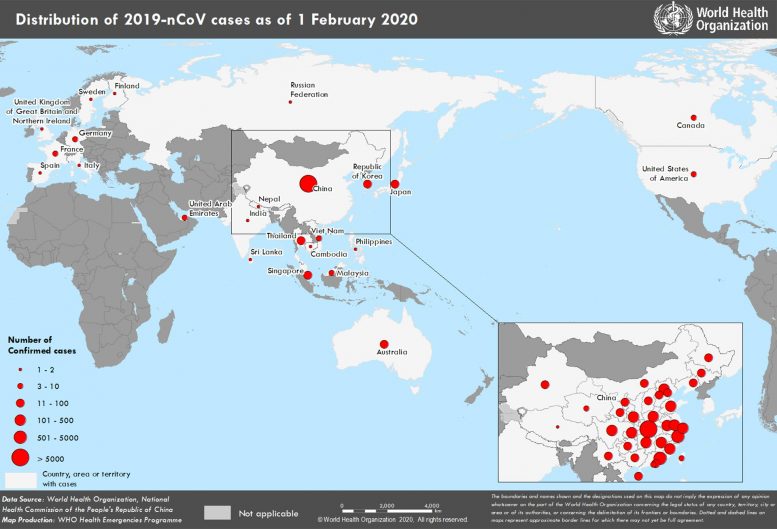
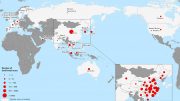
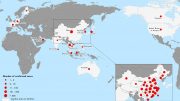
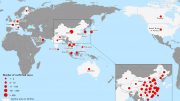
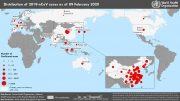
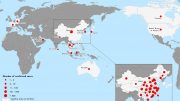
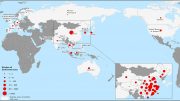
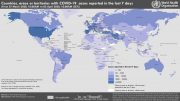
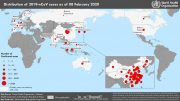
Be the first to comment on "Confirmed Coronavirus Cases Climb to 11,953 Globally – 259 Deaths in China"